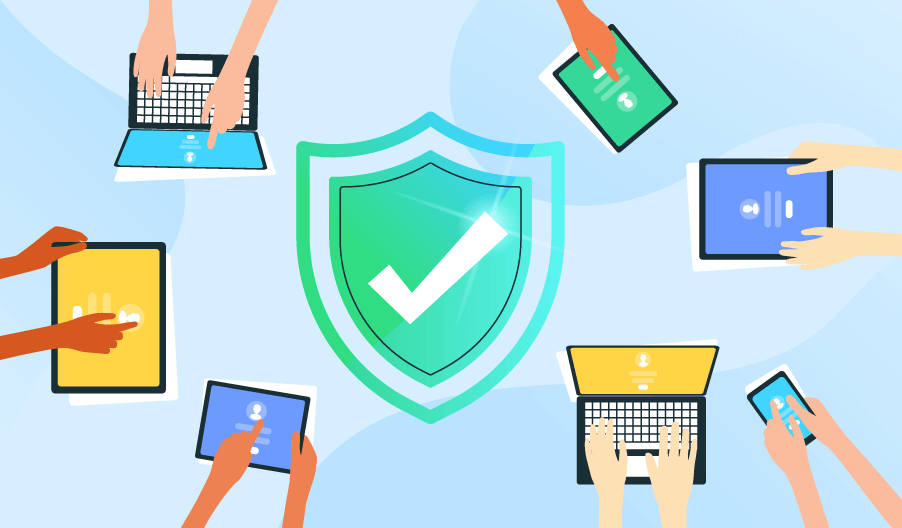BYOD Security Policy Best Practices: Safeguarding Employee Devices
Editor's note: Dmitry explores BYOD challenges and describes the key ways to protect employee devices against cybersecurity threats. If you need a solid and clear BYOD security policy that fits your business specifics, feel free to contact ScienceSoft for our cybersecurity services.
A BYOD (Bring Your Own Device) security policy is a set of rules and guidelines defining how employees can use their personal devices to access work-related data, IT infrastructure, and applications. It aims to balance the benefits of BYOD, such as increased work flexibility and employee productivity, with the risks of data breaches and privacy violations.

A BYOD security policy typically addresses the following aspects:
- What devices and operating systems are allowed or supported by organizations.
- What applications, data, and IT infrastructure components can be accessed from personal devices.
- How personal devices are secured and managed by the organization.
- How personal devices are monitored and audited for compliance.
- How personal devices are handled in case of loss, theft, or termination of employment.
Why You Need a BYOD Security Policy
- Data security. A BYOD security policy outlines the necessary security measures and helps protect corporate data and applications from unauthorized access or misuse by employees or third parties using personal devices.
- Device management. BYOD policies enable companies to control personal devices that access their networks through various means, such as enterprise mobility management (EMM) or network access control (NAC) solutions, reducing the risk of data breaches and leaks.
- Cost savings. Instead of providing corporate hardware to all employees, companies can leverage the personal devices that employees already own, which lifts the cost of purchasing, maintaining, and replacing the devices off the company’s budget. To make sure these savings don’t result in even larger losses due to security breaches, personal devices need to be appropriately protected.
- Regulatory compliance. Implementing a BYOD security policy helps ensure compliance with legal and regulatory requirements that may apply to company data and operations (e.g., HIPAA, GDPR, NIST, SOC 2).
- Increased productivity. Employees are more familiar with their own devices, and some may have specific accessibility requirements for their setups. With a BYOD security policy in place, they can use their preferred devices to work comfortably while still complying with corporate cybersecurity requirements.
BYOD Security Policy Best Practices
Here are a few solid BYOD practices you can’t go wrong with.
- Strong authentication mechanisms. Require multi-factor authentication on all personal devices that access work-related data and applications. Also, enforce strong passwords and regular password changes (e.g., every three months): this can help prevent unauthorized access if a device is lost or stolen.
- Device registration and enrollment. Require employees to register their personal devices with the IT department before using them for work. This process ensures that each BYOD device meets minimum security standards, is configured to access corporate resources, and can be tracked and managed in case of loss or security breach.
- Restricted access. Apply the principle of least privilege (PoLP) and limit the data and applications that employees can access from their personal devices. This can reduce the impact of data breaches and leaks caused by unsecured networks or applications.
- Secure connectivity. Require employees to use a protected corporate VPN whenever they work remotely from their personal devices. This can help protect data and applications from man-in-the-middle attacks and other network-based threats.
- Employee training and awareness. Conduct regular training and awareness sessions to educate employees about the BYOD policy, cybersecurity best practices, and potential risks associated with personal device use. Employees should understand their roles and responsibilities in maintaining the security of their devices and data.
Ensure Security and Compliance of Your Employees’ Devices
A BYOD security policy is a must-have for any company that allows employees to work from their personal devices. If you need expert assistance in designing, enforcing, or maintaining a mature BYOD security policy, contact ScienceSoft.

